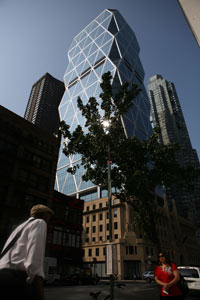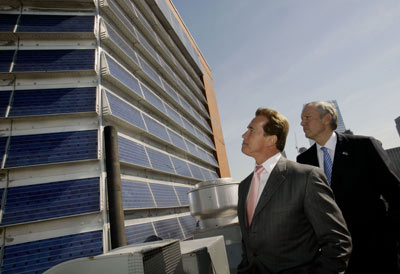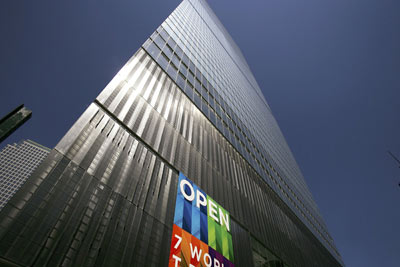
Emmanuel Dunand/Getty Images
The Hearst Tower was the first gold LEED-certified building in New York City. See more green living pictures.
Let's say you're building a house. You want to "build green" because you're trying to be more environmentally responsible -- and you also wouldn't mind saving some money on utilities and maximizing the home's resale value. Where do you start? Most likely, you'll turn to LEED.
In 1998, the Washington, D.C., trade association U.S. Green Building Council developed the Leadership in Energy and Environmental Design (LEED), which has become the authority for builders who want to work with the environment. LEED's green building requirements can be applied to new construction or older homes, but only new homes can be officially certified. The regulations are designed so that construction is healthy and durable for the occupants and the environment.
Some cities have taken the initiative to adopt green techniques as part of their city building codes. For instance, in March 2006, Pasadena, Calif., became the first local government to require LEED certification for private construction. As of October 2007, 22 states and 75 American towns and cities have adopted policies to require or encourage LEED's green building practices.
Green Building
|
Some major new buildings in New York City have also turned to LEED. In September 2006, the Hearst Tower received the first gold certification in the city, in part for its innovative frame, which uses much less steel than a traditional skyscraper. Seven World Trade Center, the first of the WTC complex to be rebuilt, also got a gold rating for its air-quality improvements, water and energy conservation measures and waste reduction. With the renovation of the United Nations headquarters, Secretary General Ban Ki Moon says he hopes the U.N. campus will "become a globally acclaimed model of efficient use of energy and resources" [source: U.N. Division for Sustainable Development]. The goal for the buildings is a silver LEED certification.
There are a few categories of LEED certification -- for schools, retail buildings and commercial interiors, for example -- but in this article, we'll be talking about LEED for Homes. We'll go step by step through the checklist, which includes a number of areas in which to earn points for certification.
But what if you already own your home? Currently, the LEED for Homes certification is only for new home construction or gut renovations, but plenty of the recommendations can be applied to existing homes, especially if you want to work on green landscaping and materials, water and energy conservation, and indoor air quality.
Advertisement

